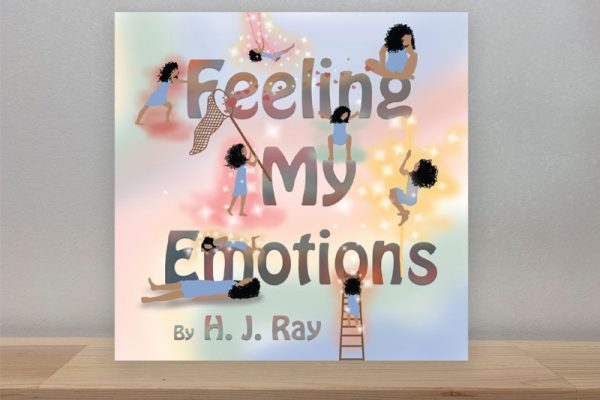
The beauty of self-expression: disability and the performing arts
By Rachel Williams
Just as the mainstream arts world ignites passion and transforms the soul, three organisations are changing the culture of the disability arts scene one pirouette and performance at a time.
Based in three different states, Sensorium Theatre, e.motion21 and Screech Arts offer extremely different services but are united in their quest to spark imaginations and improve inclusion.
Sensorium Co-artistic Director, Michelle Hovane became involved with the Western Australian-based company soon after it first started operations in 2010.
As its name suggests, Sensorium provides audiences with an interactive theatre experience that enlightens the senses.
“Our mission is to spark the imagination through bespoke, multi sensory theatre performances and storytelling and to make work for children with complex difficulties and those on the autism spectrum that they can understand,” Michelle says.
“I’ve fallen in love with the work. It’s addictive to be able to give people the enjoyment of experiencing their first taste of the theatre.
“They really get swept up in the story which is a universal human experience that they can’t access in mainstream theatre. They don’t have to sit still and keep quiet because it is so interactive.
“We see lots of joy and happiness, excitement and understanding.”
Sensorium Theatre is Australia’s only company making live shows specifically designed for young audiences with special needs, including children on the autism spectrum and those with complex and multiple disabilities. It also offers inclusive audience shows for siblings and children without a disability.
Current show Whoosh takes the audience on board a spaceship that crash lands on a different planet.
“There is no separation. The performer and the audience are working together but the performers are leading the journey.
“It’s a really immersive work that puts children with access needs at the centre of action. New recruits board a stunning custom-built spaceship for an interstellar adventure. Along the way, they taste real space food, propel through hyperdrive, crash-land and explore a strange uncharted planet.
“We have explored some more high-tech digital technology to assist kids or support those that use it on their own day-to-day lives with touch sensors for sound and light.”
Showing in Perth currently, it will travel across the country in 2021, having been postponed this year because of COVID-19.

Whoosh follows successful shows called The Jub Jub Tree, which was set in a forest and involved giant goat, donkey and rooster puppets that audiences could touch and interact with, and Oddysea, which was an ocean-based journey about friendship and how you can experience it if you can’t move independently.
The shows are developed with assistance from children within the target audience and only 15 children are in the audience for each show.
The ensemble have backgrounds in teaching or working with children with disabilities and have undergone training in the methodology of working with special needs audiences.
“You can’t just graduate acting school and just do it. Some performers are really suited to it and some are not,” Michelle says.
Sensorium also provides sensory readings of popular books and nursery rhymes to playgroups libraries and early intervention centres.
Having relied heavily on project funding, it has just received Western Australian government arts funding for three years to employ a general manager and build on a decade of innovation.
Another offering going strongly after a similar period of time is Victorian-based e.motion21, a not-for-profit organisation that provides a performance avenue for people living with Down syndrome.
“Dance is such a beautiful way to express yourself without having to use words,” says Artistic Director Anna Booth.
Founded by Cate Sayers, after she was unable to find an appropriate dance class to meet the learning needs of her daughter Alexandra, who has Down syndrome, e.motion21 held its first class in Kew in 2009, with six children aged 6 to 9 years.
In just over 10 years it has grown to become a fully accredited and registered provider of the NDIS with more than 500 participants aged from four to 50 learning across 10 locations around Victoria.


The name reflects the joy (emotion) and physical movement (motion) facilitated through the program, and the 21 acknowledges the fact the people with Down syndrome have all or part of a third copy of chromosome 21.
Anna says its rewarding to work with a committed team to deliver dance fitness, wellness and nutrition programs for people with Down syndrome.
“I’ve been working here since 2009 so I have seen tremendous growth and development and the flourishing of our little ones into adults so it’s really wonderful to see the impact of the program on our participants,” she says.
Ten teachers work to deliver 40 classes each week with a team of volunteers assisting to provide a 1-to-3 support ratio for children and 1-to-5 for adults.
“We modify our teaching for their unique learning needs. People with Down syndrome are strong visual learners so we utilise story boards, sign language, floor taping or other key word signs to support communication and therefore understanding,” Anna explains.


“We teach to what motivates our students by using popular music and dance culture, and stretch them by developing their technique, developing more complex creative performances and collaboration with leading arts organisations such as The Australian Ballet School and the Melbourne Symphony Orchestra.
“We have recently developed a program where participants are fostered in creating their own choreographic skills to build their capacity to become professional dance teachers and choreographers.
“I am not aware of any other program around specifically for people with Down syndrome to achieve these skills so we hope to employ some of our graduates in our classes which is exciting for them.”
Further north in Brisbane, Queensland, is Screech Arts, an innovative and inclusive performing arts school, run by disability support service CPL – Choice, Passion, Life.
Screech Program Facilitator Martina Cross says the initiative came to life more than 20 years ago because a group of parents, their children and CPL staff wanted to celebrate all abilities and prove that anyone can perform.
Twelve workshop and performance programs are offered, focusing on developing communication and social skills, confidence, teamwork, voice, movement, expression as well as the basic elements of drama and dance.
“The ongoing inspiration is our artists and ensuring their voices are heard in Brisbane’s performing arts community. Our society needs to represent a more diverse range of artists and at Screech Arts, that’s our goal,” says Martina.
“Out in the world, there are preconceived ideas about what people with disabilities can achieve and at Screech Arts, we strip these away.


“We coach our students to realise they can achieve the goals they set themselves through the creative and performing arts. Uniqueness and individuality are our thing, and we wouldn’t have it any other way. We believe that everyone who joins us is an artist in their own right and sometimes, all it takes is the right tools to help unlock their creativity.”
Some groups involved in the program focus on the fun, social aspect while the more advanced groups devise and perform major public performances for the community.
Martina says Screech Arts staff enjoy every moment of success they see each week.
“These “moments of success” range from small instances of interaction and building confidence, to artists performing on stage for the first time.
“For example, when a participant grows enough confidence to participate in an activity they haven’t done before. A client makes a new friend. Or one of our artists using their communication device for the first time during a performance to say their lines. Our large scale performances are pretty special too, but it’s the week to week “moments of success” that makes a Screech Arts Technician job the best in the world.”






